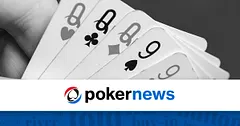Bubble
In poker, the term bubble refers to the point in a poker tournament where the next player to be eliminated will fall just short of receiving a payout. It is a critical phase of the tournament that significantly influences players' strategies.
The Concept of Bubble in Poker
In the realm of poker, the term bubble denotes a crucial phase in a poker tournament. This phase is when the next player to be knocked out will not receive any payout, while all remaining players will. The bubble phase greatly impacts the dynamics of the game, influencing both the pace of play and players' strategies. This concept is applicable in all forms of poker tournaments, including Texas hold'em and Omaha.
During the bubble phase of a tournament, the competitors' strategies diverge significantly based on their stack sizes. Players with larger stacks can apply pressure on short-stacked players, who are trying to survive the bubble and secure a payout.
Examples of Bubble Phase in Poker
Here are some scenarios to illustrate the bubble phase in poker:
You're playing in a Texas Hold'em tournament with 100 entrants, and the top 15 get paid. When there are 16 players left, you are on the bubble.
In a different tournament, the payouts start from the 50th position with a pay jump at 34th place. If you are eliminated in 35th place you could say you bubbled the pay jump.
The last spot before the final two tables of the tournament combine is sometimes called the "final table bubble."
- "With only a few chips left, he was desperately trying to survive the bubble."
- "She played aggressively on the bubble, leveraging her large chip stack to intimidate short-stacked players."
- "The tournament is on the bubble, and the tension is palpable."
Poker Bubble FAQs
How should my strategy change during the bubble phase?
During the bubble phase, your strategy should be influenced by your chip stack and position. This is one of the areas where ICM has the biggest effect. If you have a healthy stack, you can afford to play more aggressively. If you're short-stacked, you might want to play more conservatively to avoid busting before the payouts.
Can the bubble phase occur in cash games?
No, the concept of a bubble is specific to tournaments, where only a certain number of top players receive a payout.
How long does the bubble phase last?
The duration of the bubble phase can vary greatly, depending on the number of players, their play style, and the tournament structure.
Is it always a good strategy to play aggressively on the bubble?
While aggression can be profitable on the bubble, particularly for chip leaders, it's not always the best strategy. The key is to adapt your strategy based on your stack size, the table dynamics, and your read on the opponents.
What happens after the bubble bursts?
Once the bubble bursts and every remaining player is guaranteed a payout, play often loosens up considerably. Short-stacked players who were playing tight to survive the bubble might start playing more aggressively.



